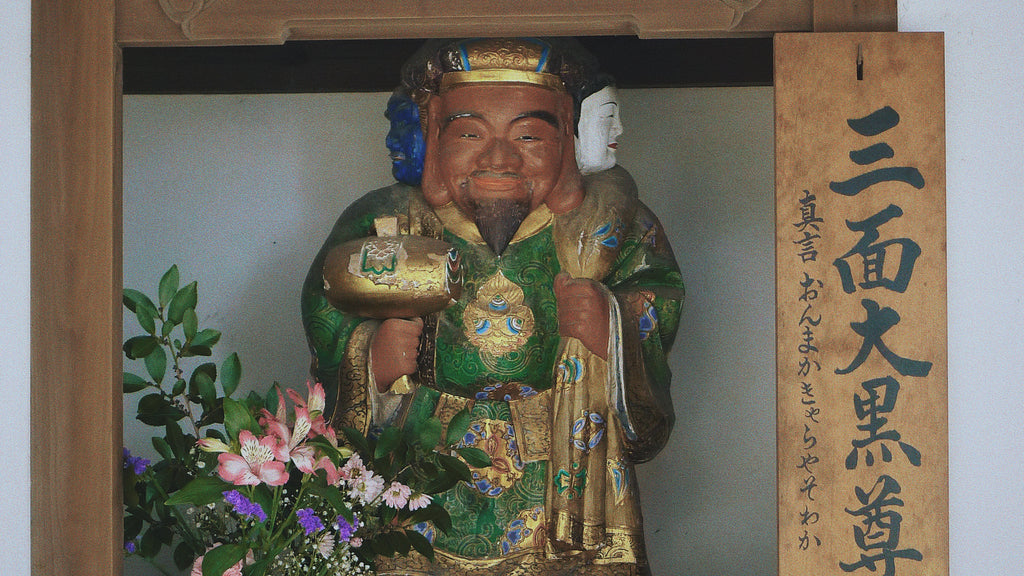Growing up mixed—African, Japanese, Scottish, and English—I was privileged with a wealth of family stories from all over the globe. Yet, the tales from Japan always held a particularly special place in my heart, woven with the threads of magic and deep-rooted folklore.
So, why share this with you? Well, I’m inviting you on an exploration. In this series, we’ll be diving deep into Japanese magic and folklore, each chapter shining light on rich history and fascinating practices.
Our first foray? The potent act of nailing or stabbing, a magical practice where the midnight ritual of "Ushi no koku mairi" seeks revenge with straw dolls, the enchanting Uchide no Kozuchi mallet promises to manifest any wish, and modern-day echoes of ancient rites resurface in unexpected ways—like a septuagenarian's mysterious protest against a world leader.
The art of anchoring wishes, hopes, and sometimes darker intentions awaits. Are you ready to explore?
Wishes, Wraths, and Rituals: The Nailing, Hammering, and Stabbing Magic of Japan

The Inari Shrine in Kyoto at dusk.
At the heart of magic lies intent. In Japanese traditions, the act of nailing, hammering, or stabbing an object serves as a powerful medium to solidify one's desires or vendettas. This practice captures the essence of a wish or grudge, transforming it into a tangible, enduring manifestation.
In the West, similar practices can be glimpsed. Consider the tradition of poppet magic, where dolls (akin to voodoo dolls) are bound, pinned, or stabbed to influence a target. Both East and West utilize symbolic actions on effigies to affect the real world or spiritual realm.
Yet, beyond the simple act lies deeper rituals, like the "Ushi no koku mairi," a late-night revenge ritual. Let's explore...
When Night Whispers: The Sacred and Sinister Ritual of Ushi No Koku Mairi
The eeriness of the night is intensified during a dark ritual known as "Ushi no koku mairi" or “Shrine visitation during the hour of the ox”.
Picture it: The Hour of the Ox, located somewhere between 1 and 3 A.M., where the stillness of Japan is disrupted by the symbolic act of nailing a straw doll to a sacred tree. It's said to be a time when the veil between our world and the spirit realm is at its thinnest much like the Western concept of the “witching hour”. By attaching a representation of a person to the tree, the practitioner hopes calamity shadows that individual in waking life.
A 72-Year-Old's Mystical Protest Against Putin
In Matsudo, Chiba Prefecture, mysterious straw figures, known as wara ningyo (akin to voodoo or poppet dolls), have been appearing at local Shinto shrines. These dolls, which are traditionally used in Japanese folklore to curse someone, were found nailed to trees with spikes. Intriguingly, each doll had a photo of Vladimir Putin, Russia's president, with a note praying for his demise.
The primary suspect wasn't a rebellious teenager but a 72-year-old local named Mitsunobu Hino. Security footage from Mikazuki Shrine caught him carrying one such doll and later making a respectful donation and prayer. Though nailing wara ningyo isn't illegal, damaging private property, like the shrine's trees, is considered vandalism.
The Uchide no Kozuchi's Blessings: Nailing Down Good Fortune with a Lucky Mallet

Sammen Daikokuten at Kosho-Ji, Uji, Kyoto
But let's not dwell only in the shadows. The mallet, with its cheerful associations, offers a brighter side to this nailing tradition. Imagine having the power to "tap out" all your heart's desires! The Uchide no Kozuchi, an enchanting mallet wielded by Daikoku-Ten, the god of abundance and good fortune, pops up in many beloved Japanese tales, promising luck and a touch of whimsy.
Momotarō ("Peach Boy") and Uchide no Kozuchi
In the tale an elderly couple discovers a boy inside a giant peach and names him Momotarō. Learning of troublesome ogres on Onigashima Island, Momotarō sets out to defeat them. With the help of millet dumplings, he gains animal allies—a dog, monkey, and pheasant.
Together, they conquer the ogres. After defeating the ogres, Momotarō finds a magical mallet, the Uchide no Kozuchi, among the treasures. This mallet can grant any wish. He brings it home, using it to bless his village with prosperity.
This mallet's tale is a testament to the rewards of bravery and good triumphing over evil.
Wrapping Up & a Peek at What’s Next
Thanks for joining me on this journey. It's been a joy revisiting rituals and tales like the Hour of the Ox and the wish-granting mallet, which have captivated me for years. Our dive into Japanese magic isn't over yet.
Picture a household object—a mirror, perhaps—quietly observing the years, only to awaken with a story to tell after a century. Curious? In our next installment, we'll venture into "The 100 Years Rule" and the captivating tales of the awakened Tsukomogami. See you there!
☘☘☘
Intrigued by magic's hidden secrets? Plunge into the unknown with our weekly newsletter. Don't just wonder, discover. Sign up now!
Related Posts:
Journey Through Japanese Magic | Part II: The Whimsical World of Tsukumogami

